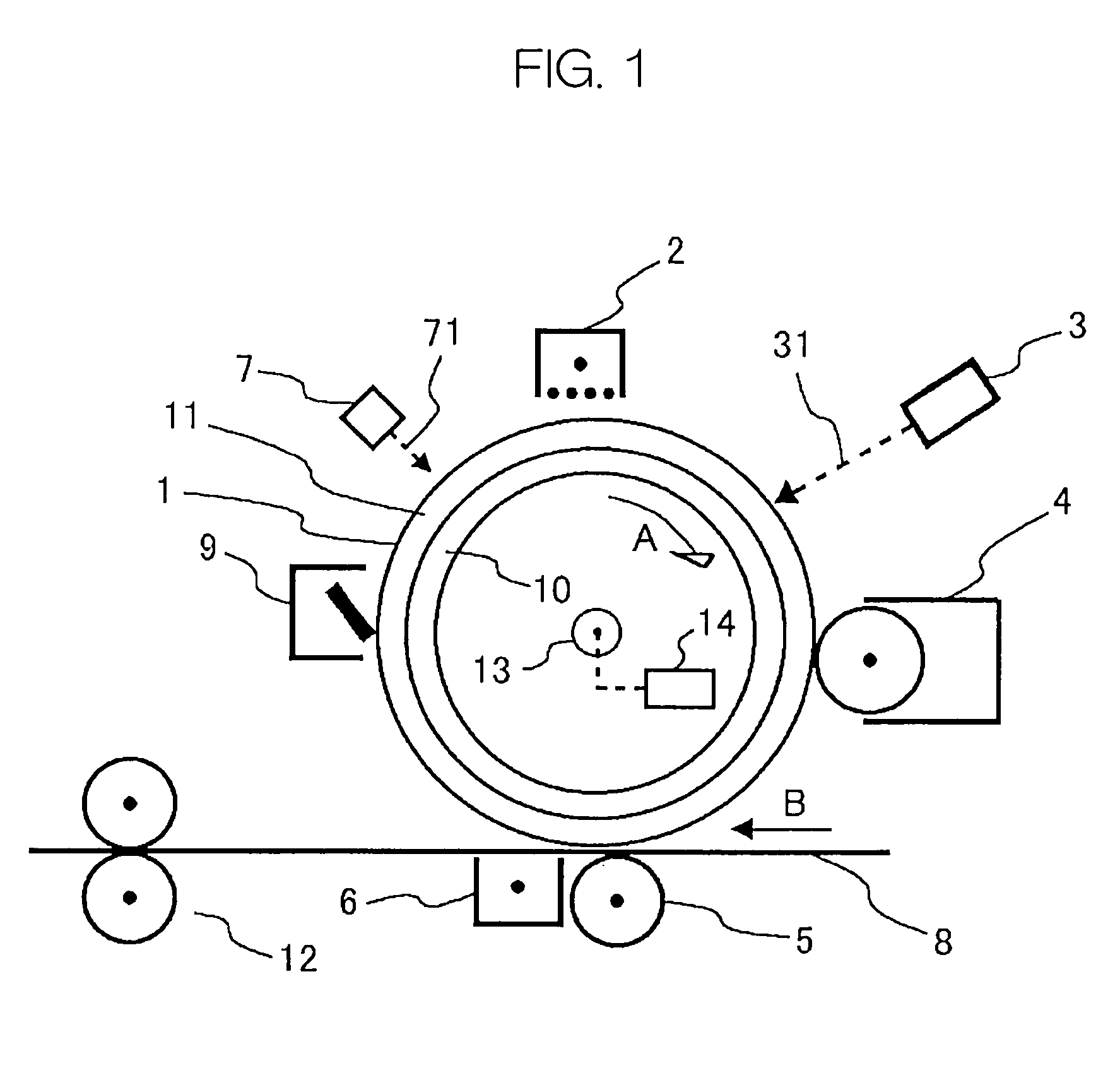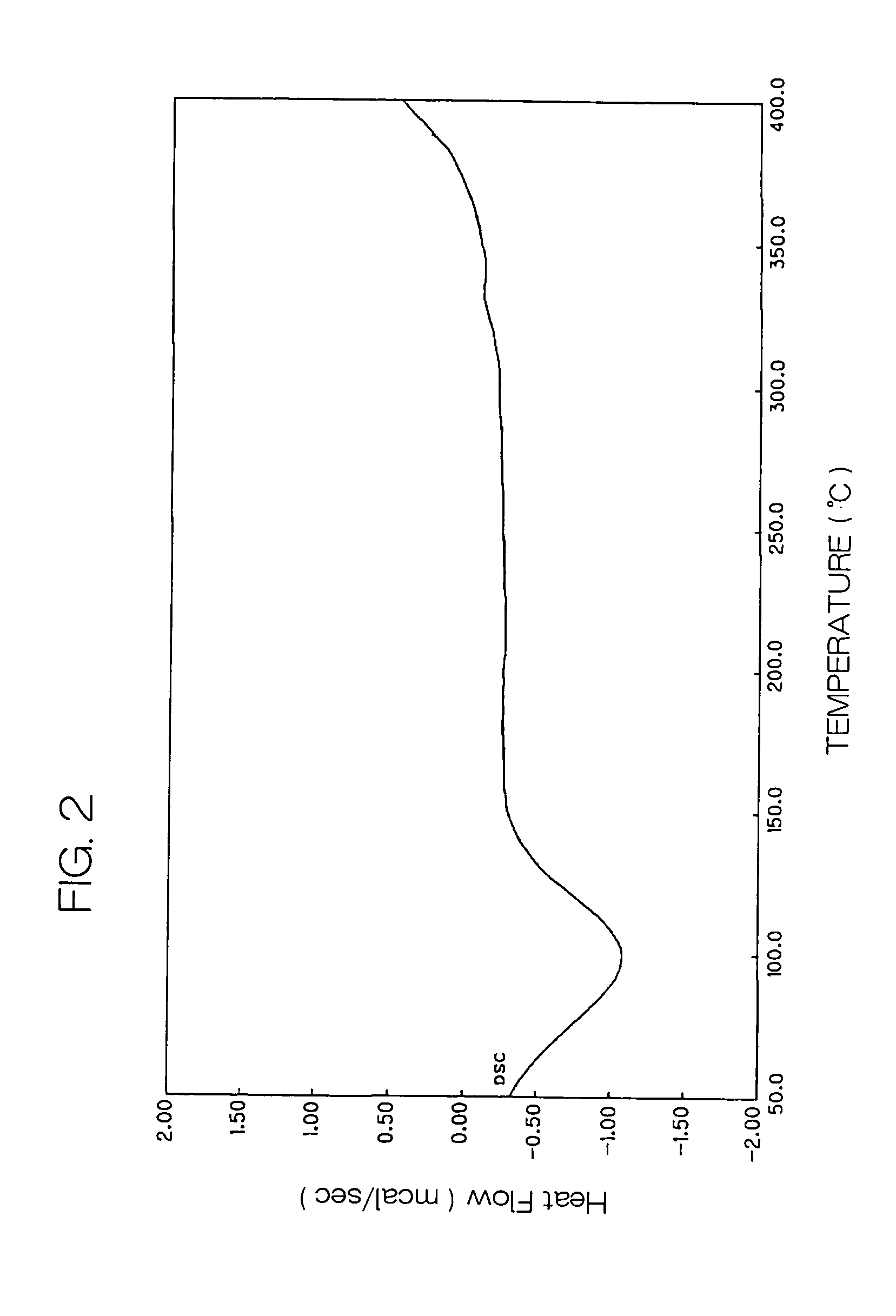Titanyl phthalocyanine crystal and production method of the same, and electrophotosensitive material
a technology of titanyl phthalocyanine and production method, which is applied in the direction of porphine/azaporphine, organic dye, porphine/azaporphine, etc., can solve the problems of insufficient storage stability of coating solution, and inability to form stably photosensitive layer with good sensitivity characteristics, etc., to achieve excellent storage stability and good sensitivity characteristics
- Summary
- Abstract
- Description
- Claims
- Application Information
AI Technical Summary
Benefits of technology
Problems solved by technology
Method used
Image
Examples
preparation example 1
(Synthesis of Titanyl Phthalocyanine Compound)
[0167]In a flask wherein the atmosphere was replaced by argon, 25 g of o-phthalonitrile, 28 g of titanium tetrabutoxide and 300 g of quinoline were mixed and heated to 150° C.
[0168]While vapor generated in the flask was distilled out of the reaction system, the temperature in the system was raised to 215° C. Then, the mixture was reacted by stirring for additional two hours, with the temperature kept at 215° C.
[0169]After the completion of the reaction, the temperature in the system was cooled to 150° C. and the reaction mixture was filtered through a glass filter. The resulting solid was washed in turn with N,N-dimethylformamide and methanol, and then vacuum-dried to obtain 24 g of a bule-violet solid.
(Pigmentation Pretreatment)
[0170]10 g of the blue-violet solid obtained above was added in 100 ml of N,N-dimethylformamide, followed by a stirring treatment with heating to 130° C. for two hours.
[0171]After two hours have passed, heating w...
preparation example 2
[0178]A titanyl phthalocyanine crystal was obtained according to Applied Preparation Example 1 described in Japanese Patent Publication No. 2097121.
[0179]Namely, 2 g of non-crystalline titanyl phthalocyanine which was synthesized in the same manner as in Preparation Example 1 before pigmentation pretreatment was put in glass beaker, and then diethyleneglycoldimethylether was added therein until the total amount reached 200 ml.
[0180]Then, the resulting solution was stirred at room temperature (23±1° C.) for 24 hours, thereby to obtain a titanyl phthalocyanine crystal.
preparation example 3
[0181]In the same manner as in Preparation Example 1 described in Japanese Laid Opened Patent Application No. 2001-181531 (2001), a titanyl phthalocyanine crystal was produced.
[0182]5 g of the crude crystal obtained by synthesizing in the same manner as in Preparation Example 1 and subjecting to a pigmentation pretreatment was dissolved in 100 ml of a mixed solution of dichloromethane and trifluoroacetic acid (volume ratio: 4:1).
[0183]After the resulting solution was added dropwise in a mixed poor solvent of methanol and water (volume ratio: 1:1), the solution was stirred at room temperature for 15 minutes, and then allowed to stand at room temperature (23±1° C.) for 30 minutes, thereby to recrystallize the solution.
[0184]The solution was filtered through a glass filter. After washed with water until the wash becomes neutral without drying, the resulting solid was dispersed in 200 ml of chlorobenzene, with water contained therein, and then stirred for one hour.
[0185]The resulting so...
PUM
| Property | Measurement | Unit |
|---|---|---|
| Bragg angle 2θ±0 | aaaaa | aaaaa |
| temperature | aaaaa | aaaaa |
| temperature | aaaaa | aaaaa |
Abstract
Description
Claims
Application Information
 Login to View More
Login to View More - R&D
- Intellectual Property
- Life Sciences
- Materials
- Tech Scout
- Unparalleled Data Quality
- Higher Quality Content
- 60% Fewer Hallucinations
Browse by: Latest US Patents, China's latest patents, Technical Efficacy Thesaurus, Application Domain, Technology Topic, Popular Technical Reports.
© 2025 PatSnap. All rights reserved.Legal|Privacy policy|Modern Slavery Act Transparency Statement|Sitemap|About US| Contact US: help@patsnap.com



